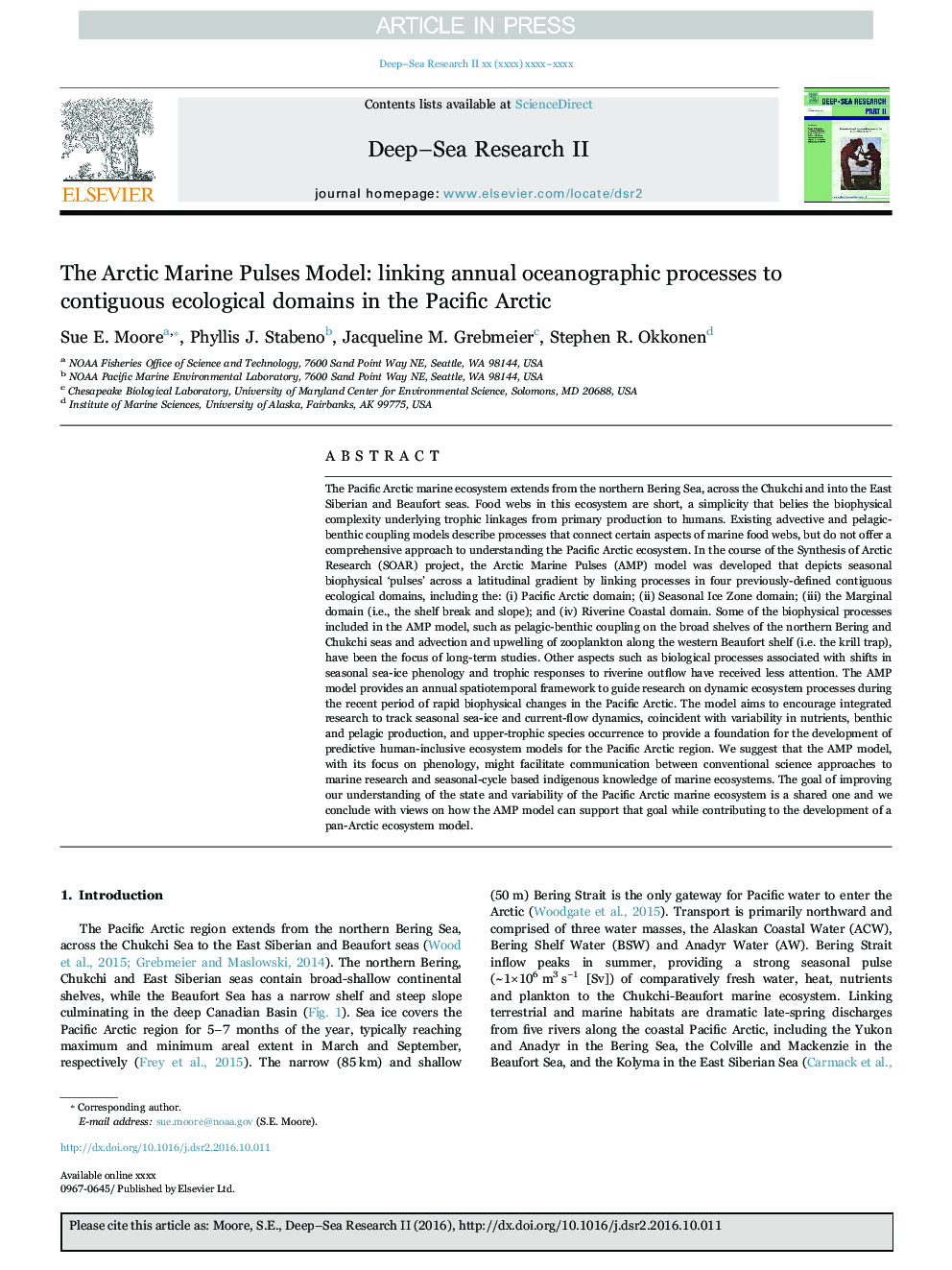| کد مقاله | کد نشریه | سال انتشار | مقاله انگلیسی | نسخه تمام متن |
|---|---|---|---|---|
| 10223802 | 1701057 | 2018 | 14 صفحه PDF | دانلود رایگان |
عنوان انگلیسی مقاله ISI
The Arctic Marine Pulses Model: linking annual oceanographic processes to contiguous ecological domains in the Pacific Arctic
ترجمه فارسی عنوان
مدل پالس دریایی قطب شمال: پیوند فرایندهای اقیانوس شناسی سالانه به دامنه های زیست محیطی مجاور در قطب های اقیانوس آرام
دانلود مقاله + سفارش ترجمه
دانلود مقاله ISI انگلیسی
رایگان برای ایرانیان
موضوعات مرتبط
مهندسی و علوم پایه
علوم زمین و سیارات
زمین شناسی
چکیده انگلیسی
The Pacific Arctic marine ecosystem extends from the northern Bering Sea, across the Chukchi and into the East Siberian and Beaufort seas. Food webs in this ecosystem are short, a simplicity that belies the biophysical complexity underlying trophic linkages from primary production to humans. Existing advective and pelagic-benthic coupling models describe processes that connect certain aspects of marine food webs, but do not offer a comprehensive approach to understanding the Pacific Arctic ecosystem. In the course of the Synthesis of Arctic Research (SOAR) project, the Arctic Marine Pulses (AMP) model was developed that depicts seasonal biophysical 'pulses' across a latitudinal gradient by linking processes in four previously-defined contiguous ecological domains, including the: (i) Pacific Arctic domain; (ii) Seasonal Ice Zone domain; (iii) the Marginal domain (i.e., the shelf break and slope); and (iv) Riverine Coastal domain. Some of the biophysical processes included in the AMP model, such as pelagic-benthic coupling on the broad shelves of the northern Bering and Chukchi seas and advection and upwelling of zooplankton along the western Beaufort shelf (i.e. the krill trap), have been the focus of long-term studies. Other aspects such as biological processes associated with shifts in seasonal sea-ice phenology and trophic responses to riverine outflow have received less attention. The AMP model provides an annual spatiotemporal framework to guide research on dynamic ecosystem processes during the recent period of rapid biophysical changes in the Pacific Arctic. The model aims to encourage integrated research to track seasonal sea-ice and current-flow dynamics, coincident with variability in nutrients, benthic and pelagic production, and upper-trophic species occurrence to provide a foundation for the development of predictive human-inclusive ecosystem models for the Pacific Arctic region. We suggest that the AMP model, with its focus on phenology, might facilitate communication between conventional science approaches to marine research and seasonal-cycle based indigenous knowledge of marine ecosystems. The goal of improving our understanding of the state and variability of the Pacific Arctic marine ecosystem is a shared one and we conclude with views on how the AMP model can support that goal while contributing to the development of a pan-Arctic ecosystem model.
ناشر
Database: Elsevier - ScienceDirect (ساینس دایرکت)
Journal: Deep Sea Research Part II: Topical Studies in Oceanography - Volume 152, June 2018, Pages 8-21
Journal: Deep Sea Research Part II: Topical Studies in Oceanography - Volume 152, June 2018, Pages 8-21
نویسندگان
Sue E. Moore, Phyllis J. Stabeno, Jacqueline M. Grebmeier, Stephen R. Okkonen,
